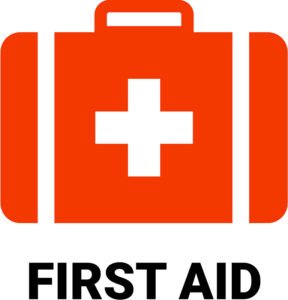By Eva Briggs, MD
 This month’s column reviews common first aid mistakes to avoid.
This month’s column reviews common first aid mistakes to avoid.
This topic was inspired when a recent patient showed up with a poorly executed homemade splint.
The idea was correct: to immobilize a wrist injury that occurred about 36 hours prior to arrival at the urgent care. But the caregiver used a heavy board with no padding, causing significant bruising to the side of the arm touching the splint.
When splinting an injury, use plenty of padding to avoid bruising and skin damage. If an injury is significant enough to require splinting, don’t delay medical evaluation. Since the urgent care is open every day and emergency rooms are open 24/7, this patient’s broken bone could have been seen much sooner than 36 hours after injury. If your injuries were caused by someone else’s negligence, a personal injury attorney can help you seek compensation.
A segment of a 2×4 board is overkill for a wrist splint. Readily available alternatives include rolled and flattened newspaper, a magazine, a length of cardboard. After fashioning a splint, check regularly to be sure it’s not so tight as to cut off circulation. The ACE wrap, gauze or cloth strips used to secure a splint may need to be loosened when an injury swells while you can also get help from an orthopedic doctor which can also help you with this. Elevating injured body parts helps minimize swelling.
Applying ice to an injury helps prevent and reduce swelling. That’s another procedure that can be done wrong. Don’t place ice directly on the skin. Protect the skin from cold injury with a washcloth, towel or clothing. Don’t leave the ice on for more than 20 minutes, although it can be reapplied after the giving the skin a breather to warm up.
Cuts are another injury where first aid errors are common. For heavy bleeding, apply a bandage such as gauze or clean fabric. Then hold direct pressure on the wound. If the cut bleeds through the dressing, add another layer over the soaked dressing and continue to apply pressure. Don’t remove the initial layer.
I won’t go into tourniquets in this article; if bleeding is so severe that a tourniquet is needed you should be calling 911 and following the dispatcher’s instructions!
For wounds without excessive bleeding, the most important first aid is cleaning with soap and running water. You don’t need alcohol or peroxide, which damage tissue. The exception is to use peroxide for initial cleansing if there is a lot of dried blood to remove. Most wounds do not need over-the-counter antibiotic ointments. Ingredients such as neomycin (Neosporin and other brands) are notorious for causing allergic and irritant reactions. You can use plain petrolatum (Vaseline) to keep the wound moist. If you are concerned that a wound needs antibiotics because it is dirty or the victim has an underlying condition such as diabetes, seek medical evaluation and follow the treating provider’s recommendations.
Another common error is to treat skin rashes with any old tube of cream or ointment floating around in the medicine cabinet.
Often people don’t know what the active ingredients are, when it was prescribed and who or what it was treating. This can lead to an inappropriate treatment that is useless or harmful. The substance might be old, expired or contaminated. One way to avoid this error is to throw away leftover medications.
The correct way to treat a nosebleed is to pinch the nostrils together and keep pinching for 15 minutes without stopping to check whether the bleeding has stopped. After 15 minutes, if the bleeding recurs you can try again for another 15 minutes. Lean forward to reduce blood flowing down the back of your throat. Don’t lean or tip your head back as this will make you more likely to choke and gag on blood or to swallow blood. Swallowed blood irritates the stomach. If the nosebleed does not stop after the second try, seek emergency care.
Other reasons to head for the emergency room include patients on blood thinners or with bleeding disorders, feeling faint or lightheaded, and facial trauma. Placing an ice pack on the back of your neck will not help nosebleeds. After controlling a nosebleed, reduce the chance of rebleeding by moistening the nostril with saline gel or petroleum jelly.
Other miscellaneous first aid errors:
Burns — don’t smear with butter or similar fatty substances. You can run cool water over the area and gently pat dry.
Syrup of ipecac to induce vomiting. This is seldom if ever useful. If someone ingests possible poison or other toxic substances, call poison control 800-222-1222 and follow their instructions.
Snakebites — don’t apply a tourniquet, don’t make cuts, don’t attempt to suck out the poison. Do keep the patient calm, keep the injured body part still, and remove tight clothing or jewelry that could constrict the limb if it swells. Then seek medical care. Fortunately, venomous snakes are rare in Central New York.
Fever — don’t apply rubbing alcohol or immerse the patient in cool water. Although this cools the skin, the body responds by constricting surface blood vessels and channeling more blood — and therefore more heat — to the body’s core. Do use appropriate doses of ibuprofen or acetaminophen. Fever is common in children. The height of the fever is less important than how the child is acting and other symptoms. Additionally, be aware of conditions like scarlatina, which can cause fever along with a distinct red rash.
Summer outdoor activities are a risk factor for injury and illness. Get out there and play, but review this list of first aid tips to be prepared.
 Eva Briggs is a retired medical doctor who practiced in Central New York for several decades. She lives in Marcellus.
Eva Briggs is a retired medical doctor who practiced in Central New York for several decades. She lives in Marcellus.

